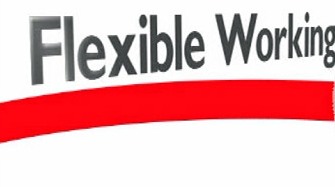Flexi timings are the in thing
 Change is a constant feature of business. The method and approach of doing business is changing like never before. The organizations are different in structure and their work cultures are different, their needs are different, and therefore workforce timings are also different. Globalization has set in a vast change in work environments. Working fixed hours in organization is not in style any longer.
Change is a constant feature of business. The method and approach of doing business is changing like never before. The organizations are different in structure and their work cultures are different, their needs are different, and therefore workforce timings are also different. Globalization has set in a vast change in work environments. Working fixed hours in organization is not in style any longer.
The credit of introducing flexi hours goes to Wilhelm “Willi” Haller (1935–2004). He was a businessman and social entrepreneur and is considered the Father of Flexi time. Haller was a visionary and realist, always ahead of his time; he was always able to recognize positive and negative developments in society.
In order to achieve his goals faster and better and to give the employees a share in the success, Haller founded the company Interflex Datensysteme with three others likeminded people, which become European market leader; it was later taken over by Ingersoll Rand. Haller built his organization on the basis of progressive management concepts in which employee motivation played a central role. The idea was that one third of profits should be shared each by investors, employees and charitable projects. A novelty for that time was the active involvement of employees in decision making processes.
 Haller never saw himself as the boss but rather as part of a team, yet he was recognized as competent CEO. He was able to make his ideas understood and successfully related them to others. He was inspiring and excited his employees, winning them for a shared vision, and thus using their knowledge potential for the organization. It was extremely important for Haller for work to be fun. His concepts and ideas went around the world. Flexible working hours have deeply changed the working world. Millions of employees profit from it every day.
Haller never saw himself as the boss but rather as part of a team, yet he was recognized as competent CEO. He was able to make his ideas understood and successfully related them to others. He was inspiring and excited his employees, winning them for a shared vision, and thus using their knowledge potential for the organization. It was extremely important for Haller for work to be fun. His concepts and ideas went around the world. Flexible working hours have deeply changed the working world. Millions of employees profit from it every day.
Flexi Timings is a system of working a set number of hours with the starting and finishing times chosen within agreed limits by the employee. In a survey of 3,300 employees across the globe in October 2010, consultancy firm Bain & Company found that effective implementation of a flexible work model can increase the retention of women by 40 per cent and even of men by 25 per cent. Further, 87 per cent of women and 74 per cent of men surveyed expressed an interest in using flexible job options.
 So, the muster-signing regime with a strict monitoring of employee walk-ins and walk-outs are slowly fading. Organizations are waking up to a new reality of adopting flexible timings to increase productivity of employees. Flexible timings at work and work-from-home policies are helping employees in finding a balance between their work and life. Initially the IT companies took a lead in moving towards flexible timings for employees, but today, non-IT companies too are gradually realizing the benefits of flexi-timings. Procter & Gamble, for instance, has rolled out a work-from-home policy for employees, wherein, an employee could seek to work from his residence for a maximum of two days in a week. The Reserve Bank of India has recently adopted the flexi timing to make their officers at ease. Early last year, RBI introduced what it termed as “crucial four hours” during which every employee should be present in office. The employees can choose the remaining four hours according to their choice. Previously, the RBI office in Mumbai remained open between 9.45 am and 5.45 pm. To accommodate the new flexi-timing option, the office now remains open between 8 am and 8 pm. Counting the four core hours between 11 am to 3 pm, which includes lunch time, the officers get to choose any eight hours that they wish to work from office. Some come at 8 am and work till 4 pm while others come in at 11 am and leave at 7 pm. RBI’s move could influence other government institutions to follow suit.
So, the muster-signing regime with a strict monitoring of employee walk-ins and walk-outs are slowly fading. Organizations are waking up to a new reality of adopting flexible timings to increase productivity of employees. Flexible timings at work and work-from-home policies are helping employees in finding a balance between their work and life. Initially the IT companies took a lead in moving towards flexible timings for employees, but today, non-IT companies too are gradually realizing the benefits of flexi-timings. Procter & Gamble, for instance, has rolled out a work-from-home policy for employees, wherein, an employee could seek to work from his residence for a maximum of two days in a week. The Reserve Bank of India has recently adopted the flexi timing to make their officers at ease. Early last year, RBI introduced what it termed as “crucial four hours” during which every employee should be present in office. The employees can choose the remaining four hours according to their choice. Previously, the RBI office in Mumbai remained open between 9.45 am and 5.45 pm. To accommodate the new flexi-timing option, the office now remains open between 8 am and 8 pm. Counting the four core hours between 11 am to 3 pm, which includes lunch time, the officers get to choose any eight hours that they wish to work from office. Some come at 8 am and work till 4 pm while others come in at 11 am and leave at 7 pm. RBI’s move could influence other government institutions to follow suit.
IBM also opted for flexi timings and they saw the productivity on rise.
Identifying the factors that prevent Indian women from opting for science careers, a committee set up by the Indian National Science Academy (INSA) has suggested remedial measures such as providing flexible working hours, mid-career breaks and age relaxation in recruitment in order to facilitate the study and practice of science by women. This move is really appreciated!
 Once an organization decides to allow some degree of flexibility, it’s important to put the communication and modus operandi in place, because flexibility need not always be a great success; when employees find loop holes in them, they are sure to exploit them. Though to a great extent it helps an organization improve its better retention rates, reduced costs, improved productivity, an increased competitive edge and a happier workforce.
Once an organization decides to allow some degree of flexibility, it’s important to put the communication and modus operandi in place, because flexibility need not always be a great success; when employees find loop holes in them, they are sure to exploit them. Though to a great extent it helps an organization improve its better retention rates, reduced costs, improved productivity, an increased competitive edge and a happier workforce.
According to a recent survey, many HR heads opined that flexi timings allow them access to a greater talent pool; it is a great policy of attracting potential employees. It requires a right understanding and effective and workable policies.
It’s a two-way responsibility
The employees need this understanding that while flexi timings allow them to achieve their personal goals; they need to work as element of a team. And, while they enjoy the suppleness they need to support others also in turn. If they want to leave early on a particular day, when the person in the next office wants to do the same, they have to oblige.
Without clear protocols in place, flexi timings should never be adopted. It can create a mess. In a small company where the number of employees is less, flexi timings may not work because when the number is small and very few out them may have required skill set to do a job, and nobody else to replace. Secondly small businesses cannot afford to lose their customer focus; they need to be clear on how they would meet customer needs. Therefore flexi timings does not work with them.
 Flexi timings need precise performance management system in place. The key responsibility areas need to be defined well, with a defined timeline. If clear goals for performance are not set, measuring the abstract output becomes unfeasible. Both men and women can enjoy flexi timings. It is observed over the past few years now that men are on rise asking for flexi timings. Unlike women, when men opt for flexi-timings they prefer to come in late and stay back late. They like to be at home in the day and come towards the evening. Employees feel if they take the calls from home, at least they are physically present at home. And that makes a difference to the family.
Flexi timings need precise performance management system in place. The key responsibility areas need to be defined well, with a defined timeline. If clear goals for performance are not set, measuring the abstract output becomes unfeasible. Both men and women can enjoy flexi timings. It is observed over the past few years now that men are on rise asking for flexi timings. Unlike women, when men opt for flexi-timings they prefer to come in late and stay back late. They like to be at home in the day and come towards the evening. Employees feel if they take the calls from home, at least they are physically present at home. And that makes a difference to the family.
How does flexi-time work?
The earliest start time and the latest finish time are defined. Out of which core time is a period where in employees must be present in the office. For the duration of the defined timings flexi hours are allotted when employees can choose from where they would like to work; these are subject to achieving total daily, weekly or monthly hours.
The employees are required to work for prescribed accounting time. This is the period over which the total contractual hours should be worked. Any credit hours built up over the accounting time can be taken in half or full days, which are termed as flexi leave. The working hours can be credited or debited to employees report. The limits to which hours owed to the employee or to the organization can be built up and carried over to the next accounting period. Typically this is set somewhere between 8 to 10 hours credit and 4 to 7 hours debit. Any surplus is usually lost, and it is up to the individual to manage their hours within these parameters.
 How do flexi timings benefit employees and employers both?
How do flexi timings benefit employees and employers both?
It benefits employees to meet domestic responsibilities and work life balance. Reduced stress helps stay healthy. It helps employees taking unwarranted leave to respond to family emergencies and social events. It gives them a greater sense of responsibility besides ownership of their own time. The banked hours can be used for extended holiday time.
On the other hand, the employers see this as good measure for staff retention, they see happy and enthusiastic workforce. The productivity levels increase while overhead costs can be curtailed to a great extent.
Since past two decades, people sitting in India work for clients in U. S and U. K and parts of the world and they have to be available to them at their work hours which necessitates for night shifts and evening shifts. Flexi hours are certainly a boon which are gradually becoming an in thing.













































